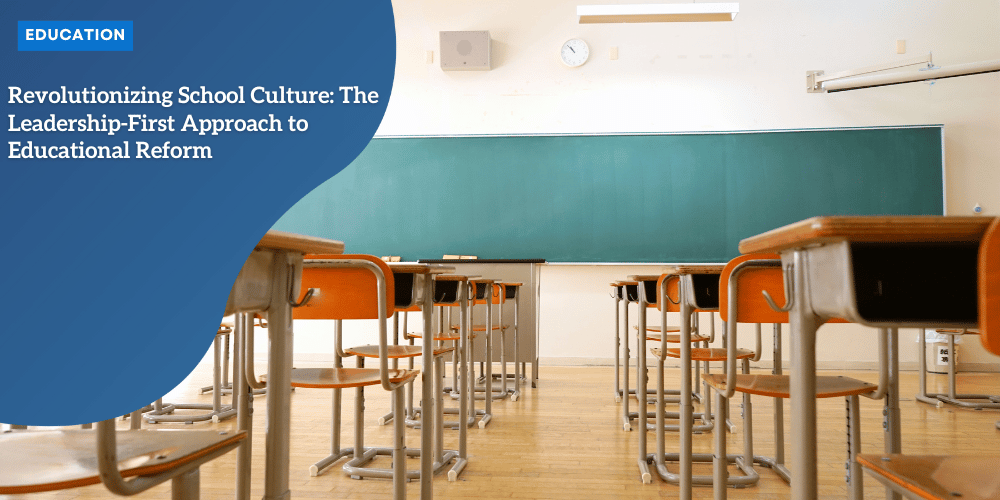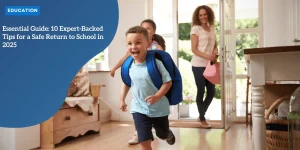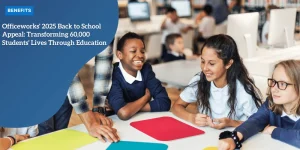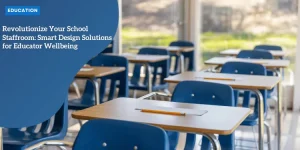The Current Crisis in School Leadership

Anúncios
The Current Crisis in School Leadership
Growing Challenges: Staff Wellbeing, Student Behavior, and School Culture
School leadership nowadays is facing unprecedented pressures. Challenges around staff wellbeing, student behavior, and overall school culture are driving many principals to their breaking points.
The landscape is such that many educators no longer see the appeal of stepping into leadership roles, leading to a worrying decrease in leadership aspirants and an increase in early departures among current principals.
Principals are reporting overwhelming stress due to the increased expectations from both systems and communities.
They feel the crushing weight of being held accountable for areas beyond their control, like student outcomes and staff performance.
Anúncios
This issue is particularly critical in Australia, where principals are often burdened with administrative tasks that detract from their fundamental purpose: leading educational success.
According to Adam Voigt, a former principal and expert in school culture, principals miss the trust and freedom to focus on their core roles without being bogged down by excessive procedural demands Real Schools.
Declining Leadership Aspirants and Early Principal Departures
The declining rates of educators willing to step into leadership roles is alarming. Assistant and Deputy Principals are increasingly hesitant to aspire for the top positions, partly due to the heavy stress and chronic overwork evident in current principals.
In many areas, especially remote and low socio-economic regions, schools face a leadership vacuum that is hard to fill. This shortage exacerbates the challenges in these schools, which already struggle with fewer resources and greater socio-economic hardships.
The turnover rates among current principals are troubling as well. The early departures of principals disrupt school continuity and morale.
Anúncios
Each departure necessitates another search and adjustment period, contributing to instability.
Additionally, the frequent turnover can breed cynicism among staff and students, making it even harder to foster a stable and positive school culture.
Unreasonable Expectations and Overwhelming Stress
School leaders often find themselves in a metaphorical “survival of the fittest” competition, where schools are pitted against each other rather than encouraged to collaborate.
The expectations placed on principals are often unreasonable, with many being held accountable to unrealistic standards in various aspects, such as enrollment numbers, facility quality, staff performance, and student outcomes.
These unrelenting pressures lead to high levels of stress and burnout. Principals are expected to juggle extensive administrative duties, parental demands, and student needs, all while fostering a supportive school culture.
This overwhelming stress takes a toll on their mental and physical health, leading to burnout and early exits from the profession.
To address these mounting issues, it is crucial for the education system to shift from a competitive, accountability-driven model to one that emphasizes support and collaboration.
Schools should foster environments where principals can focus on their primary roles and collaborate rather than compete, ensuring they are supported rather than just held accountable.
This fundamental shift could alleviate some of the pressures undermining school leadership today, creating a more sustainable, effective leadership landscape.
The journey towards educational excellence requires understanding and addressing these foundational challenges in school leadership. Moving forward, we must explore how breaking free from competitive education models can further support principals and lead to better outcomes for schools and students alike.
Breaking Free from Competitive Education Models
The Impact of Toxic Competition on Leadership Effectiveness
Toxic competition in education systems has become a significant barrier to effective school leadership and overall school improvement.
In an environment where rivalry between schools is encouraged, principals face immense pressure to outperform neighboring institutions, often at the expense of long-term educational goals.
This cutthroat atmosphere affects principal wellbeing, leading to early burnout and high turnover rates. When principals are consumed by the need to meet competitive benchmarks, their ability to foster a supportive, collaborative learning environment is severely compromised.
Shifting from Accountability-Focused to Support-Centered Approaches
To combat the detrimental effects of a competitive mindset, there must be a conscious shift from accountability-focused to support-centered approaches.
This means moving away from punitive measures that hold principals solely responsible for school performance metrics. Instead, a supportive framework should be instituted, where principals are provided with the necessary resources, mentorship, and professional development opportunities to thrive in their roles.
Support-centered systems acknowledge the complex challenges that school leaders face daily. By focusing on holistic support rather than punitive accountability, principals can dedicate more time and energy to fostering positive school cultures and addressing specific needs within their communities.
The aim is to cultivate an environment where school leaders feel valued and trusted, allowing them to prioritize educational excellence over survival in a competitive landscape.
Collaboration Over Competition for Educational Excellence
The key to achieving true educational excellence lies in collaboration rather than competition. When schools and their leaders share successful strategies and work together, it results in more consistent and meaningful improvements across the board.
Collaborative efforts can take many forms, including professional learning communities, inter-school partnerships, and shared professional development initiatives.
By fostering a community of practice among schools, educational leaders can break free from the isolating effects of toxic competition. Instead of hoarding successful approaches, schools can create a culture where knowledge and resources are openly shared.
This not only helps individual schools to thrive but also strengthens the entire educational system, making it more resilient and adaptable to changing needs.
Collaboration nurtures a sense of collective responsibility and promotes a more equitable distribution of resources. When schools help each other succeed, they contribute to a more inclusive and supportive educational environment for all students and staff.
By moving away from competitive models and embracing collaborative and supportive frameworks, we can pave the way for sustainable and effective school leadership.
This transition will ultimately lead to healthier school climates, improved staff wellbeing, and enhanced student achievement.
Transitioning from the impact of competitive models on school leadership, we now turn our attention to understanding the deeper connections between student behavior and neuroscience.
This will provide valuable insights into how schools can better support students and teachers alike.
Understanding Student Behavior Through Neuroscience
Connection Between Brain States and Student Behavior
To manage classroom behavior effectively, it is crucial to understand the connection between brain states and students’ actions.
The human brain operates primarily in two states: the neo-cortex state, where logical and rational thinking happens, and the limbic state, which is associated with emotions.
When students are in the limbic state, their ability to think and reason diminishes significantly. This is why emotional outbursts or disruptive behavior often happen—they are acting from an emotional, rather than a rational, state.
By recognizing these brain state shifts, educators can tailor their responses more effectively. For example, if a student is visibly upset, addressing their emotional needs first can help them transition back to the neo-cortex state where constructive learning can occur.
Role of Emotional Regulation in Effective Classroom Management
Emotional regulation plays a vital role in managing student behavior. Teachers who are adept at regulating their own emotions are better equipped to create a calm and supportive classroom atmosphere.
When teachers model emotional regulation, students learn to mirror these behaviors, leading to a more positive learning environment.
Simple language shifts and consistent practices can help in this regard. By training teachers to manage their own emotional responses, classrooms can transform into places where both students and teachers can thrive.
This investment in emotional regulation is not only beneficial for classroom management but also crucial for overall student success.
Importance of Investing in Teachers’ Social/Emotional Intelligence
Investing in the social and emotional intelligence of teachers is pivotal. The University of Virginia has been conducting research that underscores the importance of such investments.
When teachers possess high social and emotional intelligence, they are better at creating an inclusive and responsive classroom environment. This, in turn, enhances their teaching effectiveness and substantially improves student behavior.
A key aspect is providing teachers with ongoing professional development in social and emotional learning (SEL). Training programs that focus on SEL help teachers understand and manage their emotions, set positive goals, and demonstrate empathy.
These skills are essential for fostering a supportive classroom atmosphere where students feel safe and motivated to learn.
As we continue to explore innovative approaches to education, it is evident that understanding and leveraging neuroscience can lead to significant improvements in student behavior and academic outcomes.
The RP2.0 Revolution in School Culture
Evolution from Traditional Restorative Practices to RP2.0 Methodology
School leadership is undergoing a transformative period. Traditional restorative practices, known for their ability to build trusting relationships and resolve conflicts, are evolving into something more dynamic—RP2.0. Adam Voigt, a former principal and expert in school culture, has spearheaded this development, leveraging years of experience to craft an approach that addresses the complex modern landscape of education The Educator.
RP2.0 maintains the core principles of restorative practices but refines them for contemporary educational challenges. The commitment is to cultivate healthier, more productive school environments through practical, impactful strategies.
This evolution acknowledges that time-strapped educators need low-investment, high-return tactics.
Three Key Cultural Drivers: Language, Conduct, and Mindset
The magic of RP2.0 lies in its simplicity and focus on three cultural drivers: Language, Conduct, and Mindset.
Language
Language shapes how we interact and how students perceive their environment. In RP2.0, intentional language use is critical. It’s about more than just what we say—it’s also about how we say it.
For instance, moving from punitive language to supportive language can transform conflict resolution and foster a more inclusive classroom. Simple shifts in daily conversations can lead to profound changes in school culture.
Conduct
Conduct refers to the actions we take to handle conflicts and wrongdoing, as well as how we encourage learning.
Traditional methods often focus on punishment rather than understanding and growth. RP2.0 promotes consistent, empathetic actions that encourage students to reflect on their behavior and make better choices in the future. It’s not just about addressing incidents but fostering a culture where positive conduct is the norm.
Mindset
Mindset is the foundation of effective school leadership.
Leaders who commit to useful and growth-oriented truths create an environment where staff and students thrive. RP2.0 emphasizes mindsets that prioritize trust, respect, and shared responsibility.
Leaders are encouraged to see challenges as opportunities for growth and to support their teachers in doing the same.
Implementation of Low-Investment, High-Return Strategies
RP2.0 is designed to be both effective and manageable. Educators can implement these strategies without extensive additional resources or time-consuming new programs.
- Daily Practices: Simple, consistent practices like greeting students warmly or holding morning circles can set a positive tone for the day.
- Reflective Techniques: Encouraging students to reflect on their actions and the impact on others fosters a deeper understanding and promotes self-regulation.
- Collaborative Problem-Solving: Utilizing group activities that require collaboration helps build interpersonal skills and resolve conflicts non-punitively.
Teachers have reported feeling more effective and less stressed when incorporating these strategies, enabling them to focus on teaching rather than managing disruptions The Educator.
Embracing RP2.0 means committing to a paradigm shift—one that nurtures school communities through thoughtful language, consistent conduct, and growth-oriented mindsets.
This approach not only transforms student engagement but also significantly enhances staff wellbeing, creating a ripple effect of positive change throughout the school.
While focusing on cultural transformation, the next logical step is to look into building a sustainable future for school leadership.
It’s essential to explore strategies for improving principal wellbeing and retention, facilitating an environment where they can thrive and prioritize core educational purposes.
Building a Sustainable Future for School Leadership
Strategies for Improving Principal Wellbeing and Retention
Principal wellbeing is a critical issue that directly impacts the sustainability of school leadership. To address this, it’s essential to implement strategies that specifically target the unique stressors faced by school leaders.
- Professional Support Networks: Creating robust support networks can help principals connect with peers, share best practices, and receive emotional support. These networks can serve as a platform for collaborative problem-solving and reduce feelings of isolation.
- Ongoing Professional Development: Investing in professional development tailored to the needs of school leaders can equip them with the skills necessary to manage stress and enhance their leadership capabilities. Regular training sessions focused on resilience, emotional intelligence, and effective communication are vital.
- Access to Mental Health Resources: Providing principals with access to mental health resources, including counseling and stress management programs, can significantly improve their wellbeing. Schools and districts should actively promote the use of these resources to ensure they are utilized effectively.
| 📌 Challenge | Current Issues | Proposed Solutions |
|---|---|---|
| 📉 Declining Leadership Aspirants | Fewer educators want to become principals due to stress and overwhelming administrative tasks. | Create leadership mentoring programs and provide incentives to attract new leaders. |
| 😓 High Principal Stress Levels | Heavy workload, unrealistic expectations, and lack of support lead to burnout. | Reduce administrative burdens by hiring additional support staff and implementing stress management programs. |
| ⚔️ Toxic Competition Between Schools | Schools compete for rankings rather than collaborate for improvement. | Encourage inter-school collaboration through professional learning communities. |
| 🧠 Understanding Student Behavior | Lack of knowledge about neuroscience leads to ineffective behavior management. | Train teachers in neuroscience-based behavior management techniques. |
| 💬 Need for Restorative Practices | Traditional disciplinary methods fail to create lasting behavioral changes. | Implement RP2.0 strategies focusing on language, conduct, and mindset. |
| 🏫 Sustainable Leadership Development | Lack of long-term leadership sustainability strategies. | Encourage shared leadership models and provide continuous professional development. |
Developing Collaborative Approaches to School Improvement
Collaboration is key to sustainable school improvement. By fostering a culture of cooperation rather than competition, schools can create more effective and resilient leadership structures.
- Shared Leadership Models: Encouraging shared leadership models wherein responsibilities are distributed among a team can enhance decision-making processes and reduce burnout. When leadership is a collective effort, it lightens the load on individual principals.
- Professional Learning Communities (PLCs): Establishing PLCs among educators can lead to more consistent teaching practices and improve student outcomes. These communities provide a platform for ongoing professional dialogue and collaborative learning.
- Partnerships with External Organizations: Building partnerships with external organizations, including universities and educational nonprofits, can bring in new resources and perspectives. These partnerships can support innovative practices and provide additional support to school leaders.
Building a sustainable future for school leadership requires a multi-faceted approach focused on wellbeing, supportive environments, and collaboration. By adopting these strategies, we can create school cultures where leaders thrive and, in turn, drive educational excellence.
More about education:
Special Education Leadership at Breaking Point: 90% of Principals Struggle with Resource Shortages






